Generative artificial intelligence (AI) shapes how we create and share content. If you’ve encountered those AI-generated images, AI-powered videos, or custom designs made in minutes, you’ve already witnessed it in action. It’s smart, fast, and gradually improving each day.
The basic idea behind generative AI is to use machine learning to create content, such as images, videos, text, and more, with minimal human interference. Instead of designing everything manually, you can prompt a tool and get assets that look good.
In marketing and design, people use generative AI to create ads, social media graphics, YouTube thumbnails, product descriptions, and even full video campaigns. That means shorter timelines, lower costs, and fewer tools needed to produce quality work.
Whether you’re a content creator, marketer, designer, or website owner, generative AI tools can be beneficial. Putting these tools to work helps you keep up and focus your energy where it counts.
Let’s learn more.
Highlights
- Generative AI accelerates content creation, cutting design time drastically and allowing marketers to build visuals, videos, and campaigns faster.
- By streamlining workflows, AI-powered tools reduce repetitive tasks and make it easier to repurpose content across platforms.
- Through machine learning and GANs, creators gain realistic, high-quality visuals and personalized assets that align with brand needs.
- Testing and scaling campaigns become simpler, as AI enables rapid A/B variations, localization, and personalization without added cost.
- Human creativity remains the differentiator, helping AI-driven outputs carry the right voice, emotion, and storytelling impact.
How generative AI reshapes visual storytelling
Generative AI changes how we tell stories through design and media:
- Image generation tools create artwork in seconds.
- Video generation platforms enable teams to create explainers or ads more quickly.
- Personalized content creation is possible. You can now craft designs and tailor your brand messaging based on the audience you’re targeting.
- And, of course, workflows are speeding up across the board.
From social posts to product visuals, AI models reshape how stories are built and shared.
Here’s how.
Faster visual content creation with innovative tools
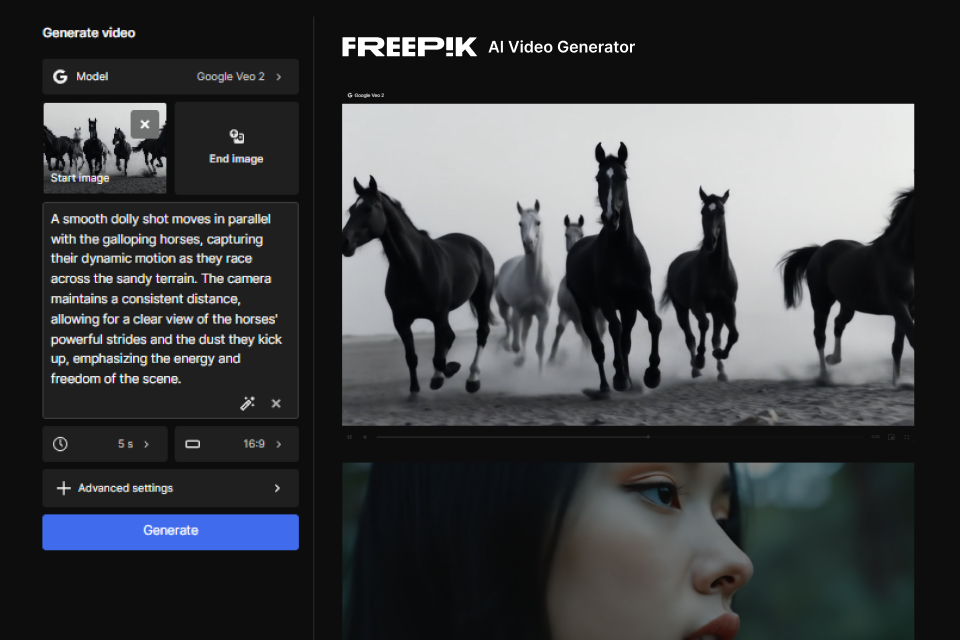
Alt text: Freepik’s AI Video Generator showing a start image, a text prompt box, and a model selector
AI cuts down design time. What used to take hours (consider all the mockups, content strategy, layout tests, and revisions) can now be done in minutes.
Tools like Freepik’s AI Video Generator let users create short videos by entering a script or choosing from presets. Instead of starting with a blank timeline, you work from ready-made clips and visual suggestions.
Benefits of these tools include:
- Fewer manual design steps
- Easy repurposing of past content
- Quick adjustments for different platforms
- More time to plan a content creation strategy
Consider this: A content production team can reduce video development time from five days to just five hours by utilizing AI-driven tools. With generative AI and AI chatbots stepping in to handle grunt work, people can focus on higher-level decisions.
Machine learning algorithms can help with storytelling
AI tools and language models aren’t guessing. They’re learning.
Machine learning algorithms help the system decide what text generations, images, colors, videos, or transitions work best for your input. These decisions are based on patterns, such as what people like, click on, or share.
Neural networks function like mini decision-makers, enabling more precise decisions. They “see” and process design elements, then make suggestions or generate visuals. Large language models (LLMs), like OpenAI’s GPT-3, help AI understand written input and translate it into design ideas or video scenes.
This mix of logic and creativity leads to well-designed designs that feel natural.
GAN images
When focusing specifically on image generation, a different kind of AI model stands out: generative adversarial networks (GANs), a machine learning technique.
GANs generate images through a two-part process: one part makes the actual image, and the other checks to see if it looks real, ultimately improving classification and sharpening results.
Multimodal capabilities change the way creators make visuals
Many tools, such as Freepik’s AI Sound Effect Generator, combine different inputs like text, sound, and visuals in one place. That’s what multimodal capabilities are.
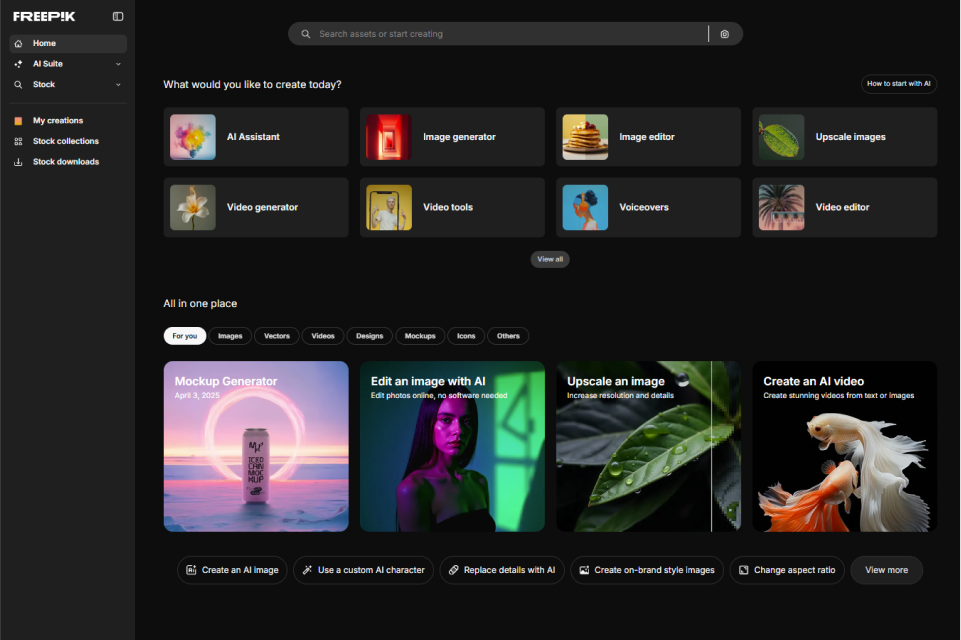
Screenshot provided by the author
Instead of juggling apps, creators can use a single platform that can:
- Create matching visuals for a script.
- Add a voiceover from typed text.
- Suggest colors and fonts based on the tone you want to convey.
AI models can improve efficiency without sacrificing quality
For creators exploring new platforms, browsing an AI tools directory can help map out which tools best support different stages of the workflow. Time pressure is a significant concern, particularly for marketers and designers who manage multiple projects simultaneously.
The good news is that generative AI models help teams meet deadlines by speeding up workflow (though you’ll still need to check for quality). You still control the creative decisions, but AI handles the repetitive tasks.
In fact, according to the Nielsen Norman Group, research across several case studies found that generative AI can boost workplace performance by an average of 66%, with the biggest gains showing up in complex tasks and among less-experienced workers.
This is how generative AI helps content creators stay efficient:
- Templates and bots adjust based on the platform
- Drafts come faster, ready for review
- Minor edits and quality control are quicker to implement
- Frameworks can be reused for future projects
Visual content creation is now easier to test and scale
A design can always look great (especially those designed by talented humans), but in the end, what matters most is how well the design performs.
Generative AI makes A/B testing easier. In seconds, you can tweak colors, layouts, and image placement to test which version gets more clicks. Today, there are numerous image generators, such as Freepik, Kittl, and Canva, through which teams can quickly experiment with multiple visuals without needing a designer for every revision.
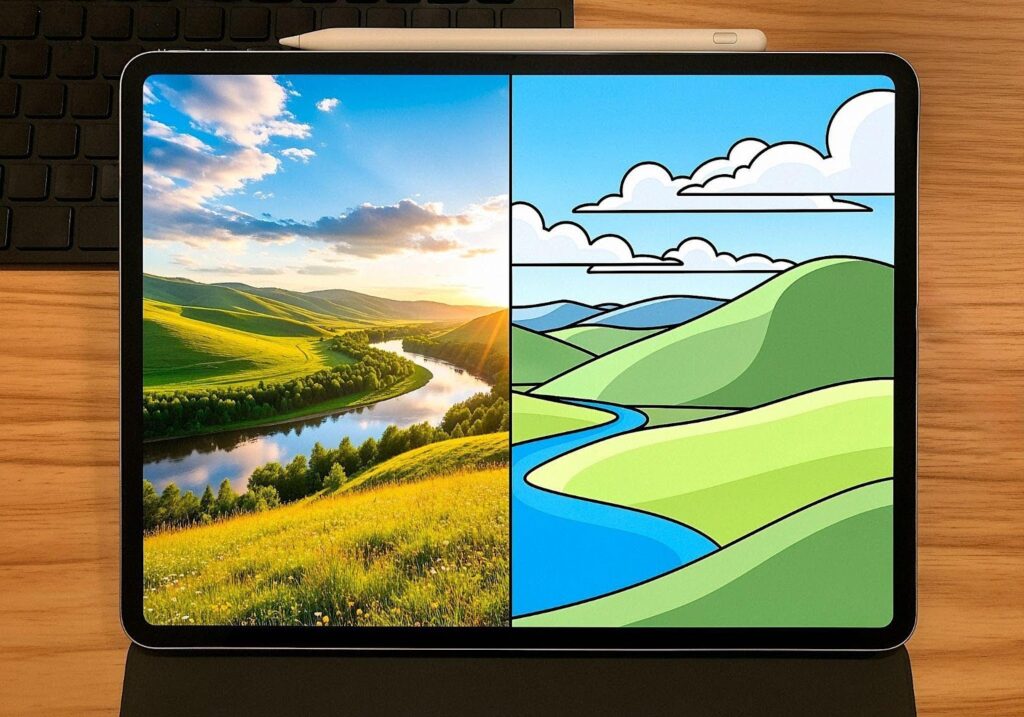
Why this matters:
- Data leads decisions
- You can test more ideas without requiring more time
- Scaling campaigns becomes more manageable
- It helps teams go from “guessing” to “knowing”
Creativity will only be more accessible with the rise of generative AI
You once needed professional-level software and extensive training to create polished designs. Now? Anyone with a Wi-Fi connection can get started.
For example, content creation processes have become faster and more cost-effective. This is all thanks to Generative AI. This opens up many doors for creators on tight budgets or with tight timelines.
AI image generator tools are changing the game
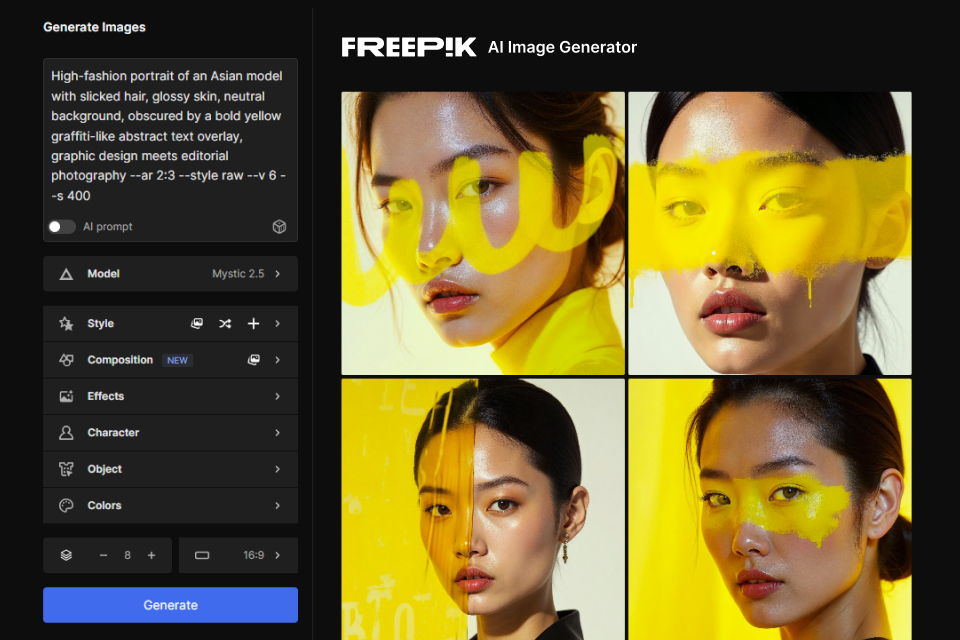
Screenshot provided by the author
Creating images involved using professional editing tools or hiring a designer. But today, all you need to do is type out a prompt. An AI image generator processes text and uses it to create visual content.
Want “a monkey wearing sunglasses and a cap on a bicycle?” You got it. But beyond fun prompts, AI can also handle practical tasks—like transforming a simple profile photo into a professional-quality headshot for LinkedIn.
These tools are invaluable for quick mockups, blog headers, or social media posts.
A fashion brand like StudioSuits can generate on-model lifestyle visuals for products like its men’s tweed jackets without organizing a full photoshoot each time. By uploading a base model photo and prompting the AI with the actual fabric style (herringbone, Donegal, checks), they can create multiple product-ready images in minutes and keep their catalog, ads, and social feeds visually consistent.
Design is no longer reserved for professionals
Before the advent of generative AI features, there was a significant learning curve associated with using tools like Illustrator or After Effects. That has changed.
Many platforms now integrate AI-assisted features or even full-on AI generation tools built for non-designers. Interfaces are clean, instructions are short, and most tools require only a few clicks to get results. Simultaneously, the need for efficiency in retrieving assets has led to the rise of AI visual search tools, which help creators instantly locate specific images from massive libraries using content, not just keywords.
With a little bit of time, beginners can now:
- Generate usable graphics in under five minutes.
- Tweak templates to match their ideas.
- Preview designs for different channels.
- Create short videos without editing software.
Content creators benefit from shorter turnaround
Time is a pain point for many teams. Optimized content must be created and delivered quickly for blog posts or email campaigns.
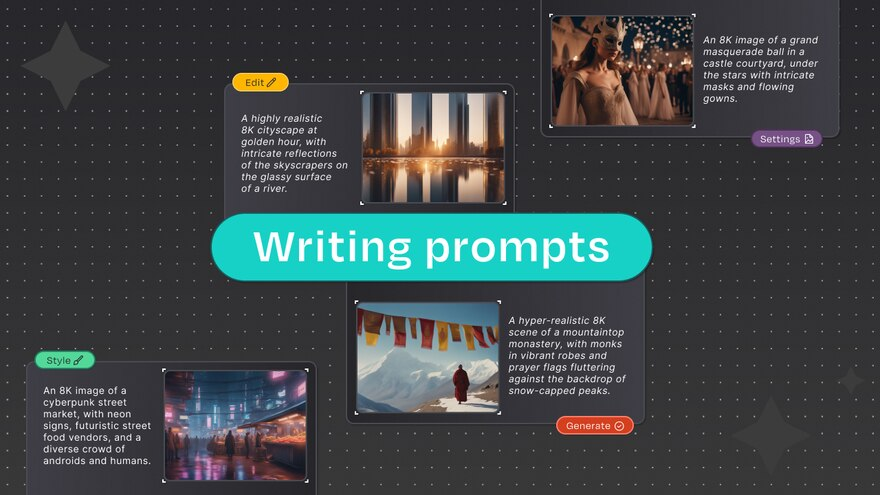
Content creators use generative AI to make drafts, images, and layouts in record time. Content planning and creation become smoother with fewer stops and handoffs between teams.
Writers can pair their copy with graphics instantly. Designers can test multiple versions with one prompt. What used to be a multi-day loop now takes hours—or less.
Personalized content at scale
One of the best parts of accessibility to generative AI is that tailoring content for different audiences is no longer expensive.
To implement a personalization strategy, generative AI helps produce multiple versions of one asset quickly. Some examples include:
- An email banner that changes based on the user’s region
- Ad visuals that reflect past shopping behavior
- Graphics adjusted for different brand personas or brand voice
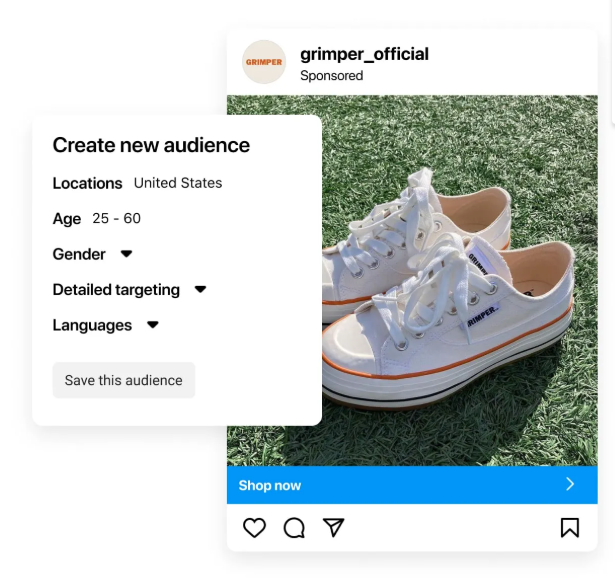
That means you’ll be able to provide more relevance, which typically leads to better results and increased customer engagement. Artificial intelligence makes it possible without hiring a whole design team.
In fact, Twilio Segment reports that nearly 90% of business leaders say personalization is critical to their company’s success. Artificial intelligence makes it possible without hiring a whole design team.
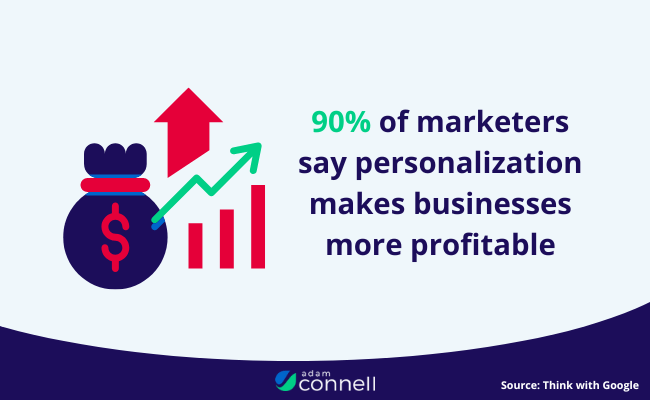
Affordability
Design once came with high fees. If you couldn’t do it yourself, you had to hire someone.
AI tools lower that barrier. Visual content creation can now be achieved with simple tools, many of which are free or low-cost. And since you’re generating your graphics, you rely less on stock photos that don’t always match your message.
This helps startups, freelancers, and creators stretch their budgets without sacrificing the quality of their work.
How human-generative AI collaboration improves digital storytelling
Generative AI helps you move faster. But moving fast isn’t the same as telling a story that lands.
Good storytelling still depends on people. Even with AI doing the heavy lifting, human oversight turns a decent output into something that connects with an audience.
Here’s how people and generative AI can work together more effectively for a successful content strategy.
Human oversight will catch things AI won’t
AI can create content, but doesn’t know your audience like you do. It doesn’t sense sudden tone shifts, brand risks, or emotional timing.
You need to guide the message, tweak the visuals, and ensure what’s being said is appropriate and effective. And that matters because:
- Generative AI tools sometimes miss nuances.
- AI can default to clichés or generic layouts.
- Humans know when something “feels off.”
- People catch things that algorithms don’t.
Image extenders help bring creative visions to life
Sometimes your image is close to what you’re looking for, but not quite there. Maybe it lacks room for design elements or feels too tightly cropped. The image extender uses AI to expand the edges of an image and fill in background details to create a bigger composition.

A human in control will still need to provide an existing image to an image extender, but the tool can then intelligently expand the scene with a prompt.
It’s convenient when you need social media banners, repurposed visuals for multiple formats, or space for text without crowding the subject.
Generative AI output can match your brand identity
Every brand has a distinct brand identity, whether it’s warm, minimal, or hyper-technical, and that identity should be consistently present in every visual, caption, and layout choice.
With AI, you can:
- Adjust the style by refining the prompt.
- Upload brand colors and fonts to generative AI tools or let the AI suggest themes that match your brand.
- Train the AI on past examples.
- Edit outputs to look like “you,” not a robot.
Instead of starting from scratch, you shape outputs into content optimized for your story. Tools like Prezent’s AI-powered storytelling platform make that process faster and more engaging.
Why storytelling needs more than automation
Automation helps. Stories that land require thoughtful human creativity.
That’s a problem when your goal is connection. People still respond to emotion, rhythm, humor, and timing. Those things don’t always appear in automated workflows, even if the AI can personalize messages.
Here’s what people still bring to the table:
- Cultural awareness
- Humor and timing
- Emotional storytelling
- Relatable experiences
Working with AI isn’t about replacing people. It’s about letting people focus on the parts they’re best at. With true human-AI collaboration, a workflow could look something like this:
- The creator builds the concept.
- AI generates initial drafts or visuals.
- Humans edit, refine, and finalize.
- Results get tested and reused with faster feedback.
This process can raise both the floor and the ceiling, resulting in better starting points and stronger finished products.
Best use cases of generative AI in content creation
We’ve covered the generative AI tools, trends, and teamwork. Now it’s time to look at how it works in the real world.
Below are use cases that demonstrate how generative AI is helping content creators accomplish more—faster, more cost-effectively, and without compromising creativity.
AI-generated content that saves time on product demos
Explainer videos can take days to plan, record, and edit. With video generation tools like Freepik’s AI Video Generator, teams can create demos with just a few inputs.
Users upload a script or select templates, and the platform handles visuals, voiceovers, and transitions. You still edit the tone and visuals, but the heavy lifting is done for you.
Product teams, marketers, and educators are all using generative AI tools like these to:
- Launch campaigns faster
- Explain features clearly
- Test different video lengths and tones
- Reduce dependence on content teams
Image creation powered by natural language processing
Type a prompt. Get a picture. Repeat.
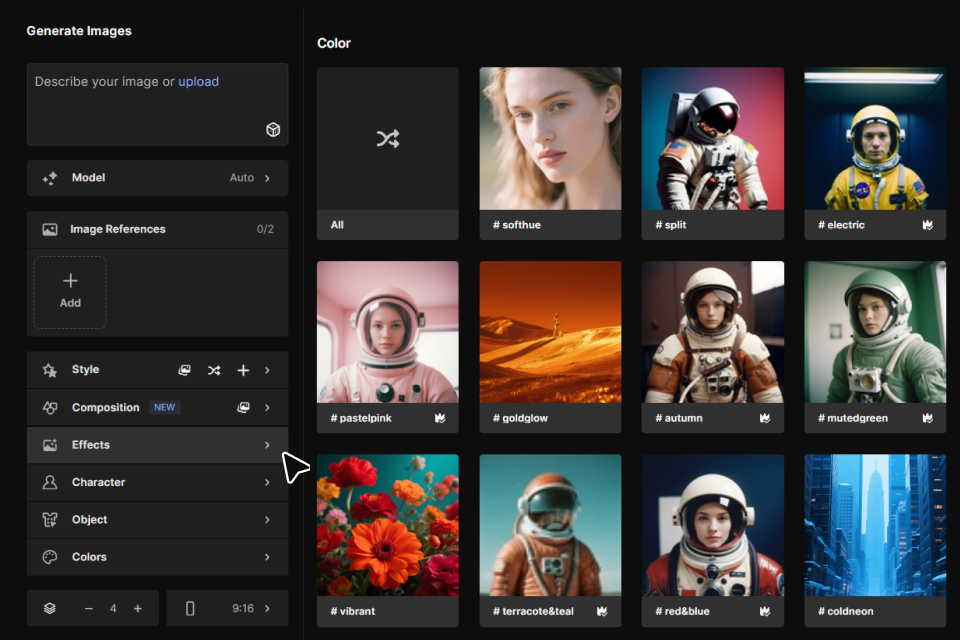
Screenshot provided by the author
Many AI Image Generator tools work this way today, thanks to natural language processing. The tool reads and interprets the input, then creates visuals based on its understanding.
If a user types “a cozy living room with sunlight and a cat on the sofa,” the generative AI tool knows what to focus on: warmth, texture, color, and key objects.
Some even adjust style—cartoon, 3D, photo-real—based on tone hints in the prompt.
This is helping creators build:
- Blog images
- Website headers
- Ad visuals
- YouTube thumbnails
—all without using Photoshop until final tweaks are needed.
Brands using AI models for entire ad campaigns
By combining foundation models, large language models, and visual tools, marketers can generate headline copy, match it with a suitable graphic, and publish it live quickly.
Here’s what’s different: the creative direction still stays human, and results are tested in markets quickly, which means the winning results are scaled across channels.
Brands like Coca-Cola, Heinz, Nutella, and Nike use this method to refresh ads faster, localize content, and generate tons of versions simultaneously.
Generative AI also helps retail teams generate product descriptions that match the tone and audience. Feed it the specs, suggest a tone, and the tool returns options. Writers then adjust for clarity or compliance.
It’s beneficial when launching:
- New inventory lines
- Multi-language versions
- Time-sensitive campaigns, whether for social engagement, sales, or lead generation
Top 5 things to do to adapt to the future of content creation
Generative AI is changing how professionals create, plan, and share content.This section explores strategies for staying ahead without drowning in constant updates
1. Stay informed about foundation models and their progress
Foundation models are pre-trained neural networks that developers base their various applications on. GPT, Claude, and Gemini are foundation models that form the core of many generative AI tools. They’re trained on massive datasets and improve quickly.
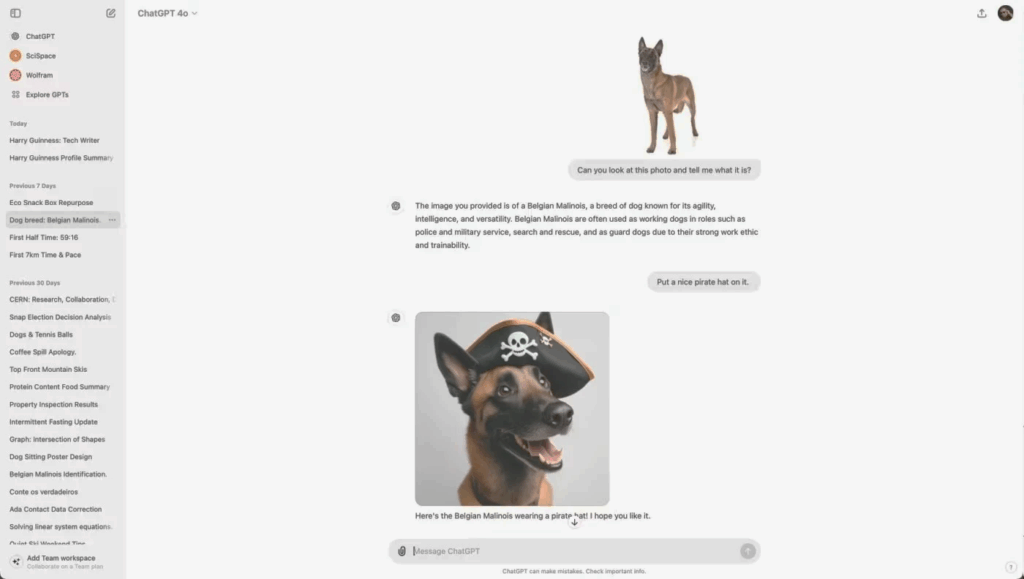
Following updates from companies like OpenAI, Google, and Anthropic helps you spot new opportunities. Doing so also enables you to avoid investing in generative AI tools that might become outdated.
Look out for:
- New release notes
- Training data improvements
- Licensing changes for generative AI models
2. Explore generative AI tools with multimodal capabilities
Multimodal capabilities combine video, audio, and written content in one place. Generative AI tools with these features let teams:
- Brainstorm all sorts of ideas with a voice prompt
- Design graphics from a script
- Turn one asset into many formats
3. Test AI-powered tools early in your workflow
Many people wait until the final stage to use AI, but that’s a missed opportunity. Bringing generative AI in at the very start helps you pressure-test ideas. Weak ones get filtered out quickly, so you don’t waste hours developing concepts that won’t work.
Beyond giving you a creative baseline to build on, generative AI also speeds up feedback loops by helping you avoid starting from ground zero.
4. Use learning and training data to improve creative decisions
Generative AI tools don’t just generate—they learn. User and training data help them get smarter over time.
Track what works and what doesn’t. Some generative AI apps even provide performance insights to help shape future content marketing choices. This creates a feedback loop that leads to better assets every time.
5. Prepare for the demand for more digital content
Every platform update, algorithm shift, or trend creates new demand for fresh digital content.
To keep up, marketing, website, and content teams are:
- Building templates for generative AI to use
- Automating asset creation
- Saving successful layouts for reuse
Batch content production is your friend here. The more you plan today, the more creative freedom you’ll gain tomorrow.
Wrapping Up
Generative AI has changed and, in the future, will continue evolving content creation across industries. These advancements provide designers, marketers, and content creators with faster and more cost-effective ways to create impactful content.
The shift is already happening, and those who adapt and use generative AI early stand to gain the most. It’s not magic, just tools, teamwork, and intelligent planning.
Are you ready to welcome your campaign strategy’s smartest team member?P.S. Looking to learn more about AI and visual content creation? Follow Codeless blog for more tips.



